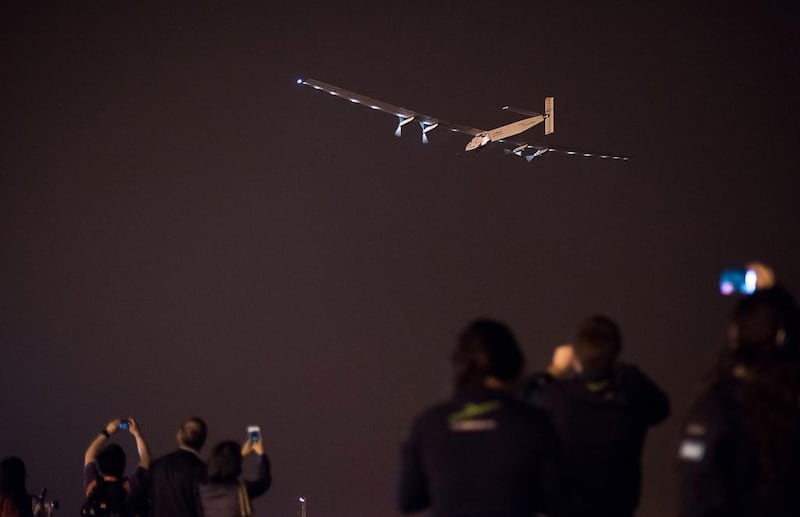The trans-Pacific flight of Solar Impulse 2, a plane powered entirely by the sun, took off on Saturday at 10.40pm UAE time.
The flight, which will be airborne for at least 120 hours and cover 8,172 kilometres, will put its engineering – and its pilot – to the test in a non-stop trip.
Andre Borschberg, the co-pilot and chief engineer, was flying the plane from Nanjing, China. It will take five days to reach Hawaii, its next destination.
“BREAKING NEWS: Weather looks good! Attempt for #Flight7 with takeoff from Nanjing at 6PM UTC! #futureisclean,” the Twitter account for @solarimpulse announced in the afternoon.
Mr Borschberg holds the record for the longest solar-powered flight, a 26-hour journey in the Solar Impulse prototype in 2010.
“I feel this attempt is the one, but I will really believe it when I will be taking off @solarimpulse #Flight7,” Mr Borschberg tweeted earlier on Saturday. “I will fly 5 days and 5 nights in #Si2’s cockpit, from #Nanjing to #Hawaii; it will be the flight of my life.”
The Swiss pilot has never faced a challenge like he will for this leg of the journey, spending about a week in a space no larger than a refrigerator.
“We have an airplane that is completely sustainable in terms of energy,” Mr Borschberg told The National in March. “The question is, with only one pilot on the plane, we need to make him sustainable as well.”
Although the project has two pilots, Andre Piccard is the other, the cockpit only has room for one.
Mr Borschberg will be monitored constantly while in flight, with the mission control centre in Moncao providing him with weather data and ideal times to sleep.
“The great challenge we have is these long-duration flight that nobody does because usually there are two pilots in one cockpit, one can rest and one is in control,” he said.
Mr Borschberg will use yoga, breathing techniques and self-hypnosis to take advantage of the 20-minute rest periods allotted during the flight.
“So the first question is how to get to sleep very quickly and the way we did it is to use meditation and breathing techniques to get away the stressful thoughts,” Mr Borschberg said. “So I could calm my heartbeat and really sleep in a few minutes.”
The flight has been delayed almost a month while mission control waits for ideal weather conditions. The plane arrived in Nanjing on April 21.
The Masdar-sponsored plane took off from Abu Dhabi on March 9 on its first leg of the zero-fuel around-the world attempt.
nalwasmi@thenational.ae






